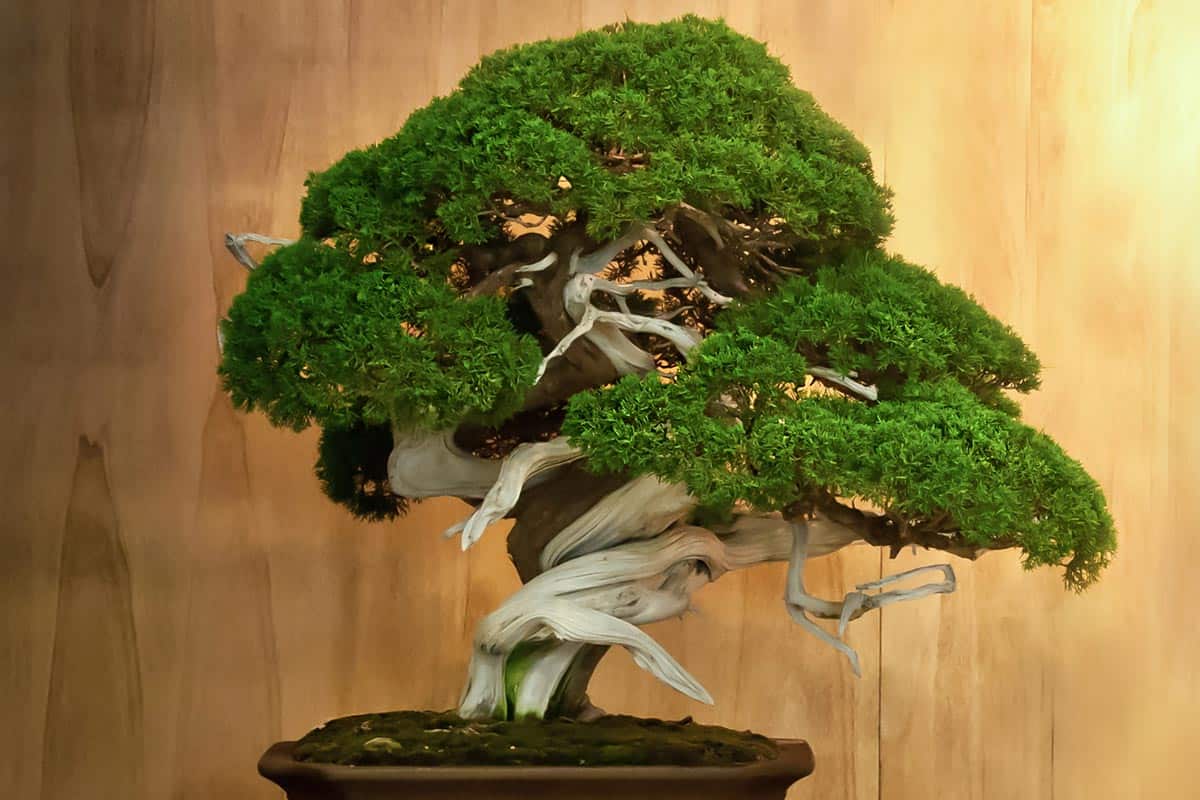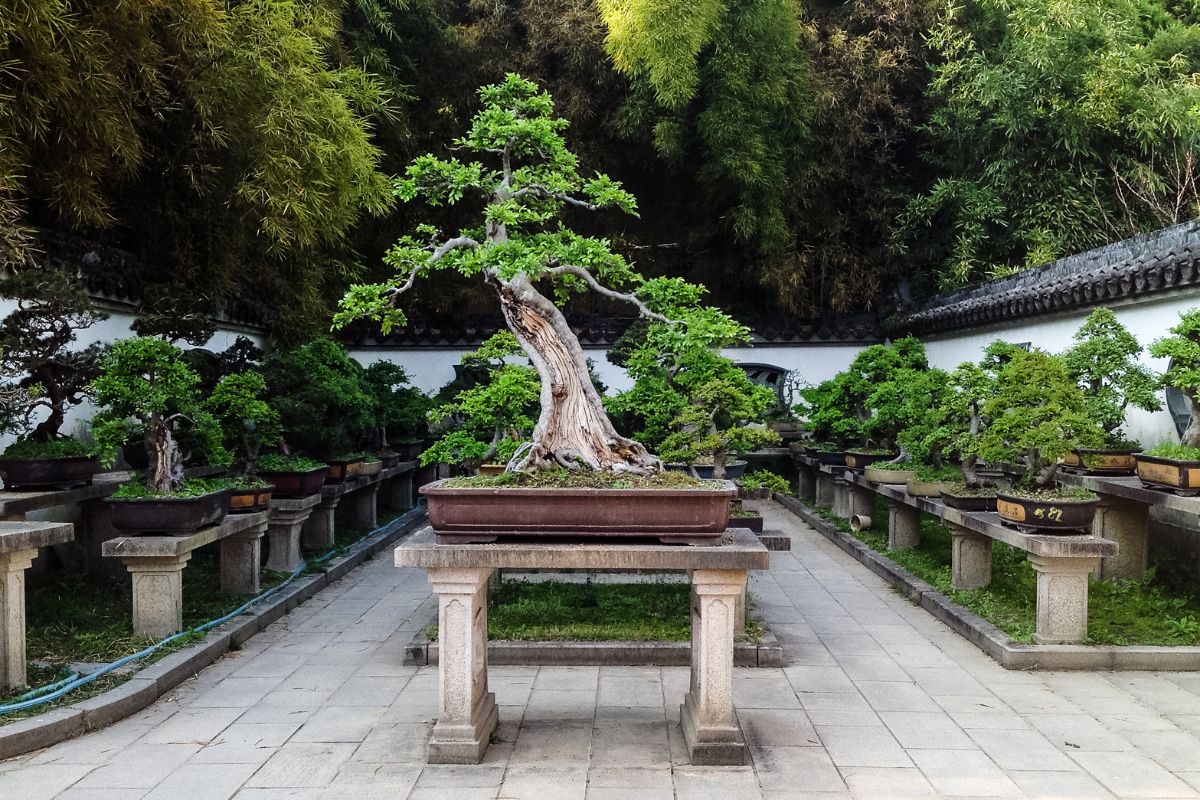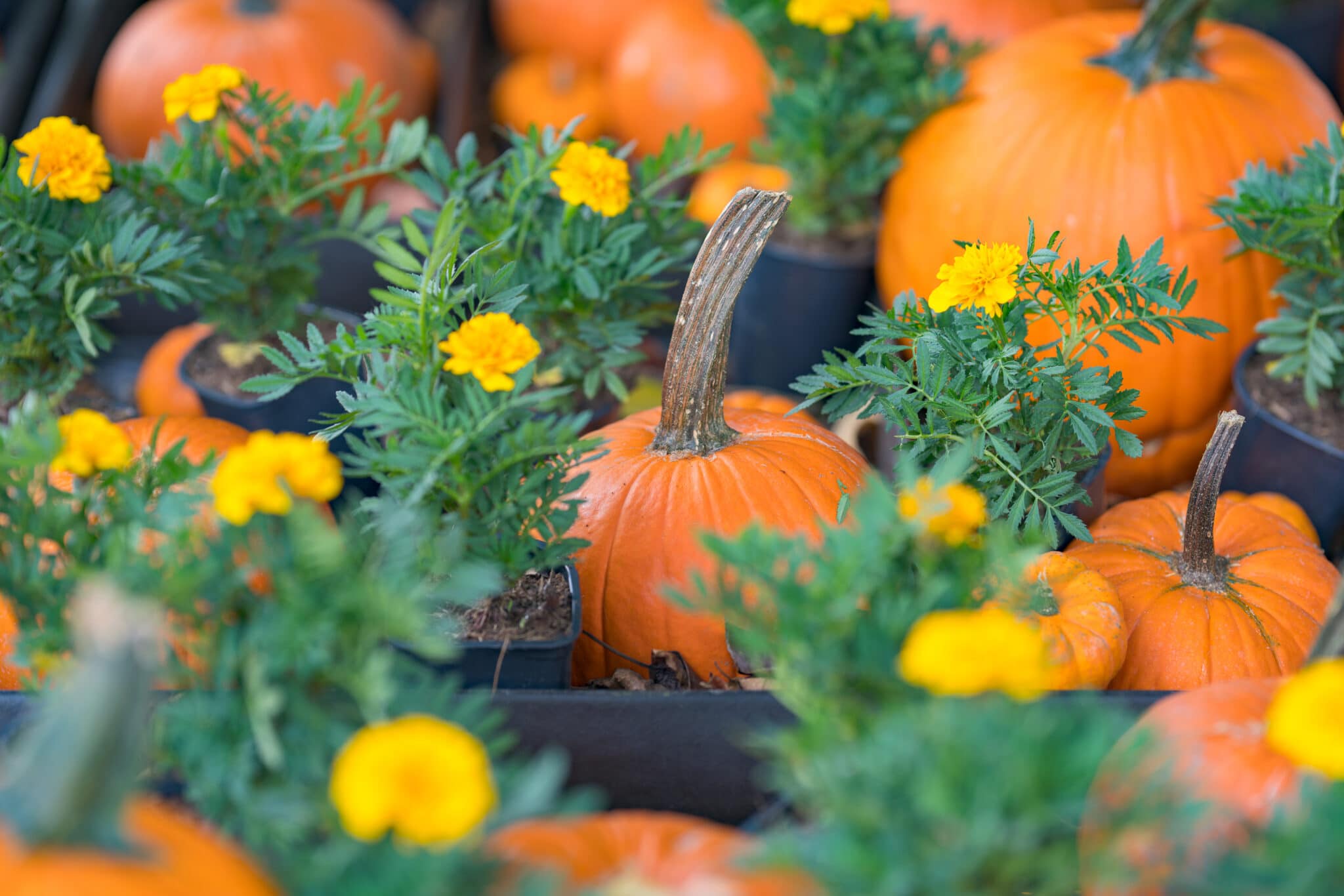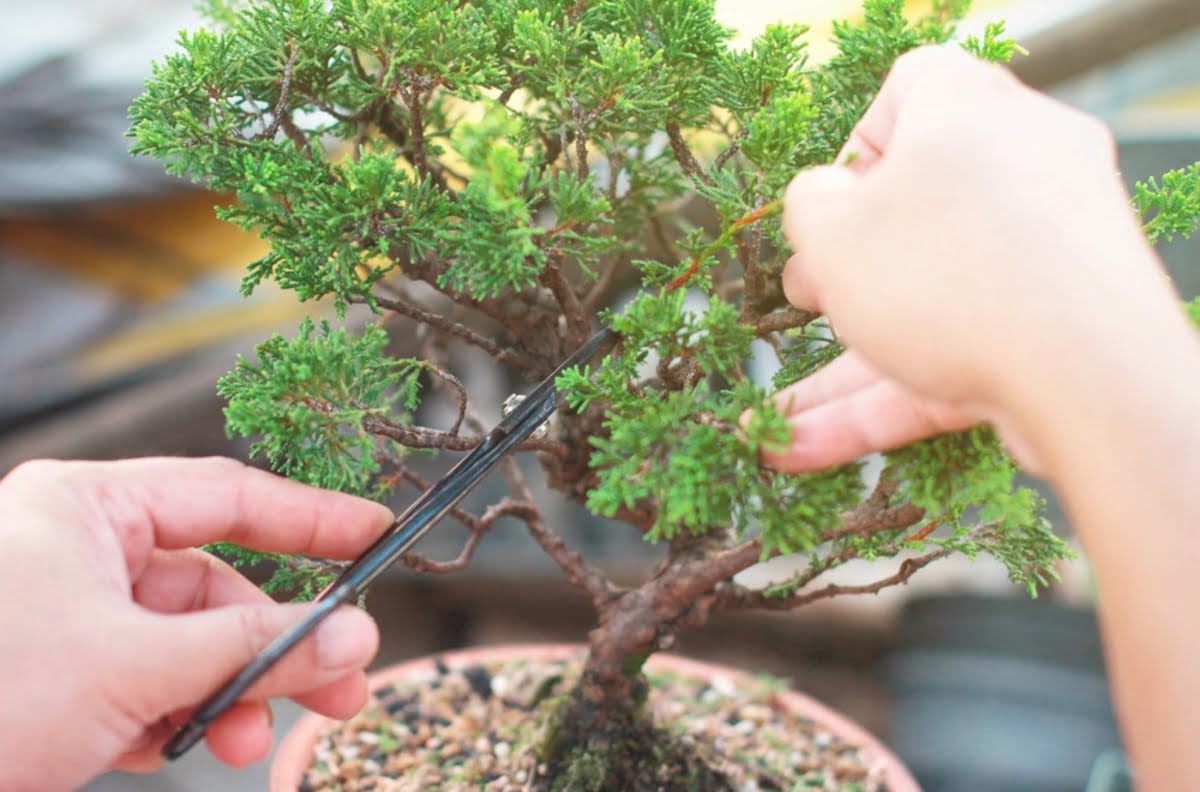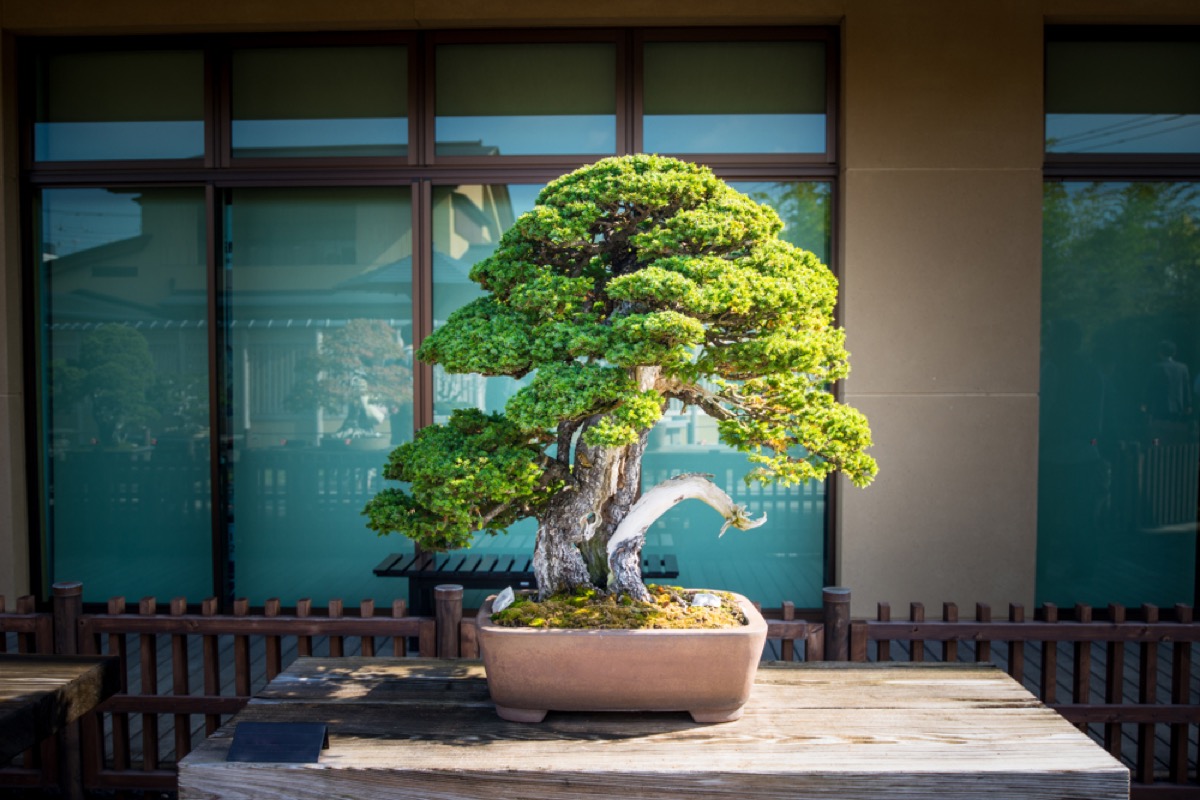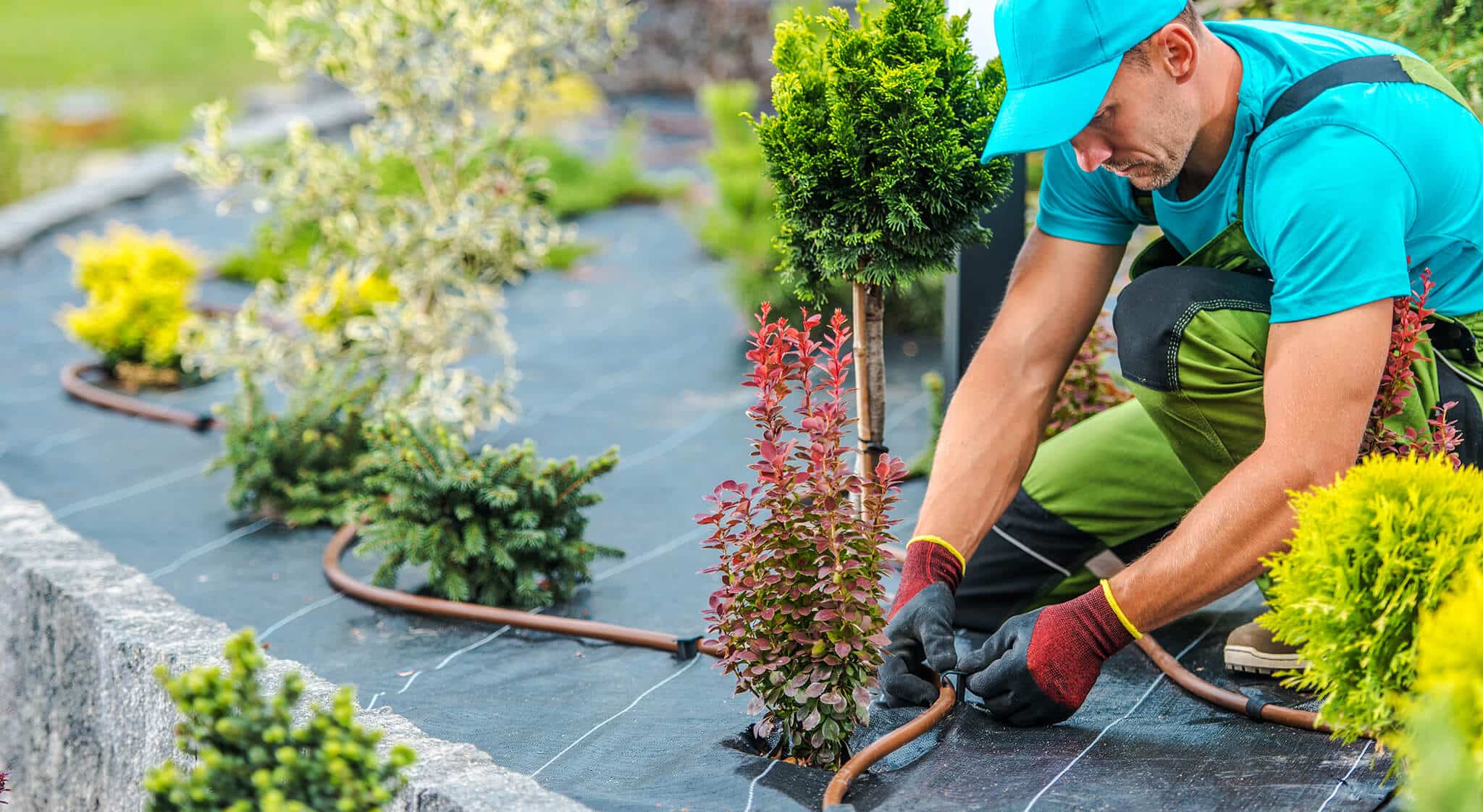Home>Types of Gardening>Ornamental Gardening>How Do You Start A Bonsai Tree For Beginners


Ornamental Gardening
How Do You Start A Bonsai Tree For Beginners
Modified: February 9, 2024
Learn the art of starting a bonsai tree with our beginner-friendly guide. Discover essential tips and techniques for ornamental gardening enthusiasts. Start your bonsai journey today!
(Many of the links in this article redirect to a specific reviewed product. Your purchase of these products through affiliate links helps to generate commission for Chicagolandgardening.com, at no extra cost. Learn more)
Table of Contents
Introduction
Welcome to the enchanting world of bonsai trees! Whether you're a seasoned gardener or just starting out, cultivating bonsai trees can be a deeply rewarding and meditative experience. The art of bonsai, originating from ancient Asian horticultural practices, has evolved into a captivating blend of nature, culture, and craftsmanship. As you embark on this journey, you'll discover that bonsai is not just about growing trees in pots; it's a harmonious fusion of art and horticulture, requiring patience, creativity, and a deep understanding of nature.
Bonsai, which translates to "planted in a container" in Japanese, encapsulates the essence of nature in a confined space, showcasing the beauty and resilience of trees in miniature form. Each bonsai tree tells a story, reflecting the passage of time through its carefully pruned branches and delicately shaped foliage. The process of nurturing a bonsai tree embodies the principles of balance, harmony, and respect for the natural world.
In this comprehensive guide, we will delve into the fundamentals of starting and caring for a bonsai tree, catering to beginners and enthusiasts alike. From understanding the artistry behind bonsai cultivation to selecting the right tree species and mastering essential techniques, this guide will equip you with the knowledge and confidence to embark on your own bonsai journey. Whether you're drawn to the serene beauty of traditional Japanese bonsai or the innovative styles of modern bonsai art, this guide will provide valuable insights to help you nurture and appreciate these living works of art.
As we venture into the captivating realm of bonsai, let's embrace the spirit of patience and mindfulness that defines this ancient practice. With each carefully tended branch and thoughtfully pruned leaf, you'll witness the transformative power of bonsai cultivation, inviting tranquility and natural beauty into your life. So, let's embark on this botanical odyssey and unlock the secrets of cultivating and caring for these exquisite living sculptures.
Understanding Bonsai Trees
To truly appreciate the art of bonsai, it’s essential to grasp the profound significance and cultural heritage that underpin these miniature masterpieces. Bonsai trees are not simply dwarfed versions of their full-sized counterparts; they embody a profound connection to nature, artistry, and the passage of time. The practice of cultivating bonsai originated in China over a thousand years ago, later flourishing in Japan, where it became deeply intertwined with Zen Buddhism and traditional artistic principles.
At the heart of bonsai cultivation lies the concept of capturing the essence of a mature tree within a confined space. Bonsai artists aim to evoke the grandeur and character of ancient trees, often found in nature, through meticulous pruning, wiring, and shaping techniques. The result is a living sculpture that exudes a sense of age, resilience, and natural beauty, encapsulating the harmony between humans and the natural world.
Bonsai trees are not merely decorative plants; they serve as powerful symbols of patience, endurance, and the cyclical nature of life. By carefully tending to a bonsai tree over years and even decades, practitioners develop a profound appreciation for the passage of time and the evolving beauty of living organisms. The art of bonsai encourages practitioners to embrace the impermanence of nature and find tranquility in the subtle changes that unfold with each season.
Moreover, bonsai trees are imbued with rich symbolism, often representing elements of the natural world or embodying abstract concepts such as resilience, balance, and harmony. Each bonsai style, from the windswept and cascading forms to the formal upright and slanting styles, conveys a unique narrative, inviting contemplation and reflection.
As you embark on your bonsai journey, it’s essential to recognize the cultural and philosophical dimensions of this ancient art form. By understanding the profound symbolism and artistic principles that underlie bonsai cultivation, you’ll develop a deeper connection to these living works of art and the traditions that have shaped them.
Selecting the Right Bonsai Tree
Choosing the right bonsai tree is a pivotal decision that sets the stage for your journey into the captivating world of bonsai cultivation. With a myriad of tree species and styles to choose from, selecting a bonsai tree that resonates with your aesthetic preferences, lifestyle, and level of expertise is crucial. Each tree species possesses unique characteristics and care requirements, making it essential to consider several factors before making your selection.
First and foremost, consider the environment in which you plan to nurture your bonsai tree. Assess the available light conditions, temperature, and humidity levels to determine which tree species will thrive in your specific climate. Some species, such as the Ficus, thrive indoors and tolerate lower light levels, making them ideal for beginners or individuals living in regions with limited outdoor growing space. On the other hand, outdoor species like the Juniper or Pine require ample sunlight and seasonal variations, making them well-suited for outdoor cultivation.
Next, consider the level of commitment you are prepared to devote to your bonsai tree. Some species, such as the resilient Chinese Elm or the adaptable Jade, are forgiving of occasional lapses in care and are well-suited for beginners. Conversely, species like the delicate Japanese Maple or the demanding Azalea require meticulous attention and horticultural expertise. Assess your availability and willingness to invest time and effort into the daily care and long-term maintenance of your chosen bonsai tree.
Furthermore, contemplate the aesthetic appeal and style of bonsai that resonates with you. Whether you are drawn to the graceful elegance of the formal upright style, the dynamic energy of the windswept form, or the tranquil beauty of the cascading style, each tree species lends itself to specific bonsai styles. Consider the visual impact and emotional resonance of different species and styles, allowing your personal preferences and artistic sensibilities to guide your decision.
By carefully considering the environmental requirements, maintenance demands, and artistic potential of various tree species, you can select a bonsai tree that aligns with your aspirations and lifestyle. Remember that the bond between a practitioner and their bonsai tree is a deeply personal and enduring one, and the process of selecting the right tree marks the beginning of a profound horticultural and artistic journey.
Essential Tools and Materials
Equipping yourself with the essential tools and materials is fundamental to the successful cultivation and care of bonsai trees. From precise pruning implements to specialized growing mediums, each component plays a vital role in shaping and nurturing these miniature arboreal wonders. As you embark on your bonsai journey, familiarize yourself with the indispensable tools and materials that will enable you to cultivate and maintain healthy, aesthetically pleasing bonsai trees.
Pruning tools are indispensable for shaping and refining the structure of bonsai trees. Essential implements include concave cutters for precise branch removal, knob cutters for creating clean pruning wounds, and branch cutters for fine-tuning the silhouette of the tree. Additionally, a pair of sharp, high-quality scissors is essential for delicate foliage and root pruning, ensuring that each cut is clean and minimizes stress on the tree.
Wiring tools, including aluminum or copper bonsai wire, are essential for training the branches and trunk of bonsai trees into graceful and expressive shapes. Wire cutters and pliers are indispensable for applying and removing wire with precision, allowing you to sculpt the tree’s form while minimizing damage to the branches.
When it comes to nurturing the roots of bonsai trees, specialized tools such as root hooks and rakes are essential for gently untangling and pruning the root system during repotting. These tools facilitate the maintenance of a healthy root structure, ensuring optimal nutrient uptake and overall tree vigor.
Furthermore, selecting the right growing medium is crucial for providing the necessary support and nutrition to bonsai trees. Well-draining bonsai soil, typically composed of a blend of organic and inorganic components such as akadama, pumice, and lava rock, promotes healthy root growth and prevents waterlogged conditions. Additionally, a well-designed bonsai pot with adequate drainage holes is essential for providing a suitable environment for the tree’s root system, promoting a balanced and harmonious growth pattern.
By investing in high-quality tools and selecting the appropriate growing materials, you set the stage for the successful cultivation and artistic expression of your bonsai trees. These essential components serve as the implements through which you can sculpt, refine, and nurture these living works of art, fostering a deep and enduring connection with the natural world.
Steps for Starting a Bonsai Tree
Embarking on the journey of starting a bonsai tree is a captivating and rewarding endeavor that requires patience, attention to detail, and a deep appreciation for the art of horticulture. Whether you are starting from a seed, a cutting, or a pre-existing nursery plant, the process of cultivating a bonsai tree encompasses several essential steps that lay the foundation for its future growth and artistic expression.
1. Selecting the Tree: Begin by selecting a tree species that aligns with your aesthetic preferences, climate, and level of expertise. Consider the environmental conditions and maintenance requirements of the chosen species to ensure a harmonious and sustainable relationship between the tree and its caretaker.
2. Choosing the Right Container: Select a suitable bonsai pot that accommodates the tree’s root system while complementing its visual appeal. Ensure that the pot provides adequate drainage to prevent waterlogging and promote healthy root development.
3. Pruning and Shaping: Carefully prune the tree’s branches and foliage to establish the desired structure and aesthetic form. Use precise pruning tools to create clean cuts and shape the tree in accordance with your artistic vision.
4. Wiring and Training: Employ bonsai wire to gently train the branches and trunk into graceful and expressive shapes. Exercise caution to avoid damaging the tree’s delicate bark and branches while sculpting its form through strategic wiring techniques.
5. Repotting and Root Care: Repot the tree at appropriate intervals, ensuring that the root system receives adequate space for growth and development. Prune and untangle the roots as needed, promoting a healthy and well-balanced root structure within the confines of the bonsai pot.
6. Soil and Watering: Utilize well-draining bonsai soil to provide optimal support and nutrition to the tree’s root system. Water the tree consistently, taking care to maintain appropriate moisture levels and avoid waterlogged conditions that may compromise root health.
7. Fertilization and Maintenance: Implement a balanced fertilization regimen to supply essential nutrients to the tree, supporting its overall vigor and resilience. Regularly monitor the tree for pests, diseases, and other maintenance needs, addressing any issues promptly to ensure its well-being.
8. Patience and Observation: Cultivating a bonsai tree is a process that unfolds over years and even decades. Exercise patience and keen observation as you witness the tree’s subtle growth and evolving beauty, embracing the transformative journey of nurturing a living work of art.
By following these essential steps and infusing the process with creativity and mindfulness, you can embark on a fulfilling and enriching bonsai journey, nurturing a tree that reflects your artistic sensibilities and reverence for the natural world.
Caring for Your Bonsai Tree
Caring for a bonsai tree is a practice that demands attentive stewardship, a deep understanding of horticultural principles, and a harmonious connection with nature. As a living work of art, a bonsai tree requires consistent care and nurturing to thrive and embody the timeless beauty and resilience that define the art of bonsai. By embracing the following essential aspects of bonsai care, you can cultivate a healthy and visually captivating bonsai tree that reflects the artistry and dedication you invest in its well-being.
1. Light and Temperature: Position your bonsai tree in an environment that provides adequate light exposure, taking into account the specific requirements of the tree species. Balance sunlight exposure with shade to prevent foliage burnout and ensure optimal photosynthesis. Additionally, maintain appropriate temperature levels to support the tree’s growth and physiological processes, avoiding extreme fluctuations that may stress the tree.
2. Watering: Establish a consistent watering routine, taking into consideration the tree’s water needs, environmental conditions, and soil moisture levels. Water the tree thoroughly, allowing excess water to drain from the pot to prevent waterlogged roots. Adjust your watering frequency based on seasonal variations and the tree’s growth cycle, ensuring that the root system remains adequately hydrated.
3. Pruning and Maintenance: Regularly inspect the tree for overgrown or diseased branches, foliage, and roots, pruning and maintaining the tree’s structure as needed. Use precision pruning tools to create clean cuts and shape the tree in accordance with your aesthetic vision, promoting balanced growth and overall tree health.
4. Fertilization: Implement a balanced fertilization regimen to supply essential nutrients to the tree, supporting its overall vigor and resilience. Select a suitable bonsai fertilizer that aligns with the tree’s nutritional needs and growth stage, applying it at appropriate intervals to promote healthy foliage, root development, and overall tree vitality.
5. Pest and Disease Management: Monitor the tree for signs of pests, diseases, and other health issues, addressing any concerns promptly to prevent the spread of infestations or infections. Utilize organic pest control methods and horticultural treatments to safeguard the tree’s well-being while maintaining a natural and harmonious balance within its microenvironment.
6. Seasonal Care: Adapt your care routine to align with the seasonal changes that impact the tree’s growth and dormancy cycles. Adjust watering, fertilization, and pruning practices to accommodate seasonal variations, ensuring that the tree receives the support it needs to thrive throughout the year.
By embracing these essential aspects of bonsai care and infusing your stewardship with patience, mindfulness, and a deep reverence for nature, you can cultivate a bonsai tree that embodies the timeless beauty, resilience, and harmony that define this ancient art form.
Conclusion
As we conclude this journey into the captivating realm of bonsai cultivation, it’s clear that the art of bonsai transcends mere horticulture, encompassing a profound fusion of artistry, cultural heritage, and a deep reverence for the natural world. From the meticulous shaping of branches to the nurturing of a harmonious microcosm within a bonsai pot, the practice of cultivating bonsai trees invites practitioners to embark on a transformative and deeply rewarding journey.
By understanding the rich symbolism and philosophical underpinnings of bonsai, practitioners can develop a profound appreciation for the timeless beauty, resilience, and tranquility that bonsai trees embody. Each bonsai tree serves as a living testament to the enduring connection between humans and the natural world, inviting contemplation, creativity, and a sense of harmony into our lives.
As you embark on your own bonsai journey, may you find inspiration in the subtle elegance and enduring spirit of these living works of art. Embrace the principles of patience, mindfulness, and attentive stewardship as you nurture your bonsai tree, and allow the transformative power of bonsai cultivation to enrich your life and deepen your connection to the natural world.
Whether you are drawn to the graceful forms of traditional Japanese bonsai or the innovative expressions of modern bonsai art, may this guide serve as a source of knowledge, inspiration, and encouragement as you embark on your own botanical odyssey. Cultivating a bonsai tree is not merely an act of horticulture; it is a profound and enduring practice that invites us to celebrate the beauty of nature, the passage of time, and the artistry of human hands.
As you tend to your bonsai tree, may you find joy in the subtle changes that unfold with each season, and may the tranquil beauty of your living sculpture bring a sense of serenity and wonder into your daily life. Embrace the art of bonsai with an open heart and a reverence for the natural world, and allow the transformative journey of bonsai cultivation to enrich your spirit and awaken a deeper connection to the timeless rhythms of nature.
